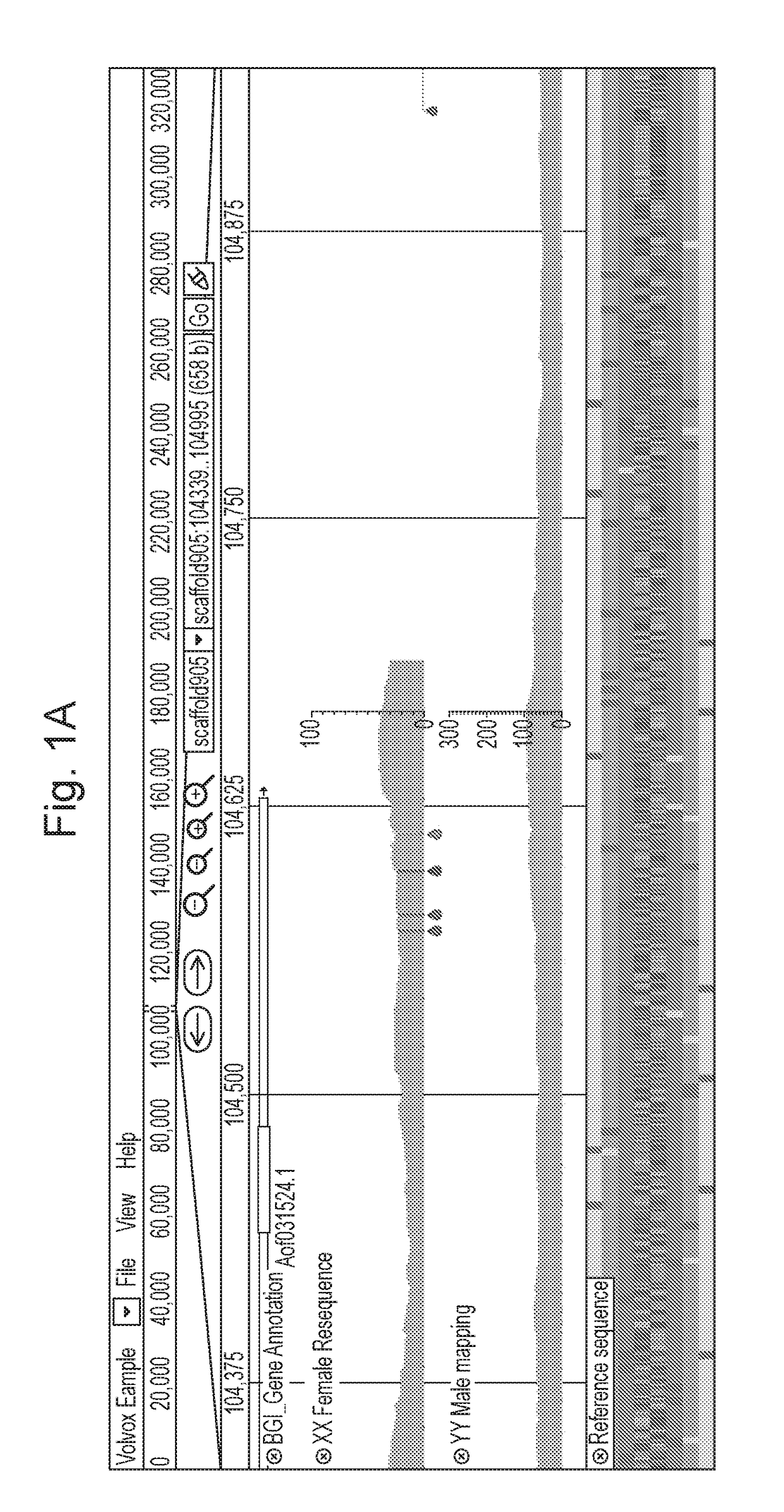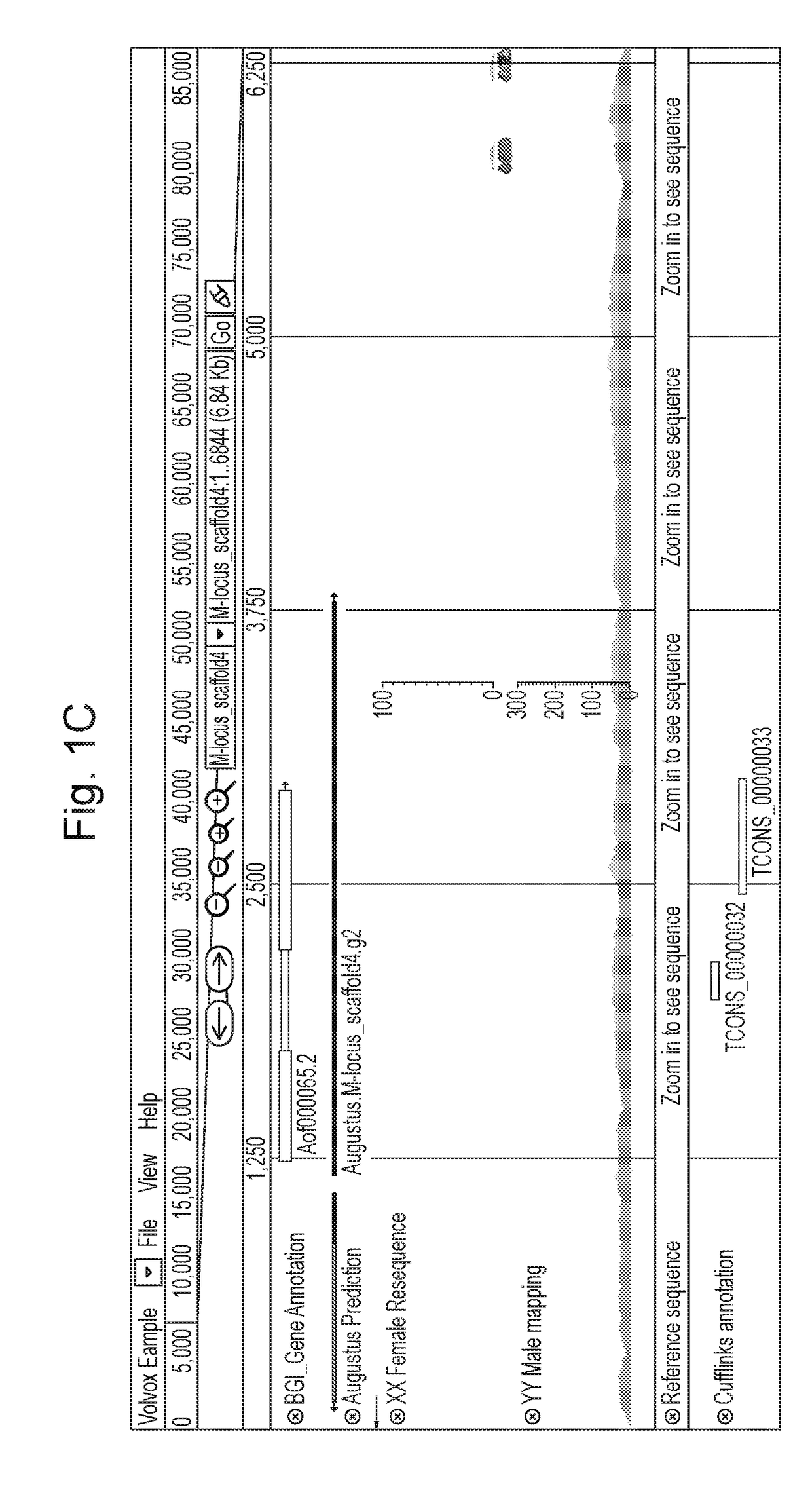Sex determination genes and their use in breeding
a technology of sex determination and gene, applied in the field of plant breeding, can solve the problems of inability to self-fertilize and/or apply in vitro androgenesis, hamper the improvement of commercial hybrid seed parents, and inability to start a backcross program to introduce a trait found in a female donor plant into a seed parent of a hybrid, etc., to achieve enhanced or restored gynoecium developmen
- Summary
- Abstract
- Description
- Claims
- Application Information
AI Technical Summary
Benefits of technology
Problems solved by technology
Method used
Image
Examples
example 1
Genetic Analysis of Hermaphrodite Mutant 5375
[0280]Following anther culture of a heterozygous male (XY), Riccardi et al. (2010) obtained male (YY), female (XX) and the “5375” genotype, a rare example of a completely hermaphroditic clone. This genotype for which all flowers are hermaphrodite is distinct from andromonoecious genotypes that have varying proportions of male and hermaphroditic flowers. The completely hermaphroditic clone as mature plant showed the ability to produce berries from all of its flowers, during vigorous growth in three successive seasons which was a unprecedented high fruit set compared the fruit set of all male breeding stock ever evaluated by the institute of CRA-ORL, Lodi, Italy. The hybrid plant that served as source material used to obtain hermaphrodite 5375 was a male plant not capable of producing berries, and in case berries have been overlooked in some seasons it would only be few because source plants for anther culture, used in breeding preferably s...
example 2
Genetic Analysis of Hermaphrodite Mutant K323-G33
[0317]All male hybrid K323 is a cross between female doubled haploid LIM425 obtained from an anther culture of the cultivar Gladio and a male doubled haploid LIM428 obtained from an anther culture of the cultivar Gijnlim.
[0318]LIM428 was selected as parental plant because it, among other criteria, was not capable of producing berries. Although male hybrid K323 has a rudimentary style in the gynoecium, and despite of the fact that its grandfather Gijnlim sometimes harbors andromonoecious plants, it never showed a single berry in more than 15,159 plants in various hybrid trails that were evaluated in the period 1998-2007. It was decided to create a mutant version of K323 that acquired the hermaphrodite trait as the result of a changed GDS mediated by irradiation mutagenesis. The decision to provide another example in which a mutation in a GDS results into a plant with the sex linked hermaphrodite trait was made because this hybrid poses...
example 3
Epi-alleles of the DUF247 domain containing female suppressor gene
[0337]When breeding line K1036 was seed propagated in an isolated greenhouse in which bees were placed for pollination, it was noticed that all plants had produced berries, whereas normally half of the plants expected to be male would not produce berries. Several years later, lot K1036 was sown again to unravel the inheritance of the hermaphrodite trait. Sixteen plants were evaluated for flowering and fruit set. All plants, which all had well developed anthers were capable of fruit set under insect-free conditions. It was noted that fruit set somewhat varied among those plants and / or among their branches. Despite of some failures in fruit set, the number of berries on a plant could reach a level as high as 95%, which is exceptionally high. As breeding records provided insufficient information on the number of generations breeding line K1036 has been propagated, five K1036 plants were genotyped using a set of thirty pr...
PUM
| Property | Measurement | Unit |
|---|---|---|
| ionic strength | aaaaa | aaaaa |
| temperature | aaaaa | aaaaa |
| ionic strength | aaaaa | aaaaa |
Abstract
Description
Claims
Application Information
 Login to View More
Login to View More - R&D
- Intellectual Property
- Life Sciences
- Materials
- Tech Scout
- Unparalleled Data Quality
- Higher Quality Content
- 60% Fewer Hallucinations
Browse by: Latest US Patents, China's latest patents, Technical Efficacy Thesaurus, Application Domain, Technology Topic, Popular Technical Reports.
© 2025 PatSnap. All rights reserved.Legal|Privacy policy|Modern Slavery Act Transparency Statement|Sitemap|About US| Contact US: help@patsnap.com



